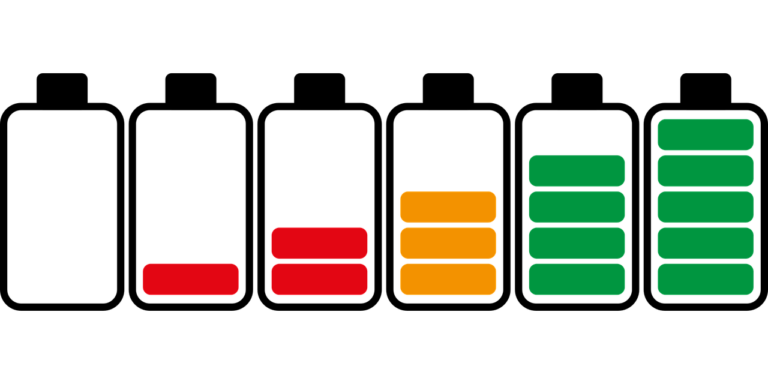ELISA Testing Explained
What is an ELISA test? ELISA (enzyme-linked immunosorbent assay) is a laboratory method enabling the quantification of targeted markers in a biological sample. ELISA can be used to quantify the presence of a peptide, a protein, a hormone, or an antibody.
ELISA has numerous advantages over Western blotting:
- Western blotting is a “semi-quantitative” technique. ELISA is directly quantitative.
- Western blotting measures target molecules or antibodies in quantities of micrograms to nanograms. ELISA is sensitive when targets are present in nanograms to picograms. ELISA is 10 times more sensitive than Western blotting.
- Western blotting takes at least a day. ELISA can be completed in just 2 to 3 hours.
- Western blotting requires purified samples or lysates. ELISA testing can be run on lysates, tissues, blood, urine, and so on.
- Western blotting yields inconsistent results. ELISA results are highly reproducible.
- Laboratories can do a much greater volume of testing with ELISA than with Western blotting.
ELISA is faster, more sensitive, flexible, and reproducible. ELISA has a higher throughput than Western blotting and can be used to analyze a variety of samples of diverse origins.
ELISA is the tool of choice for orthogonal assays. An orthogonal assay is a second r0und of testing aimed at distinguishing between compounds that generate false positives from compounds that are active against the target. ELISA provides a second assay format to confirm that the compound that is detected is genuinely directed as the biological target of interest. Any compound found to be inactive in an orthogonal assay is removed from the list of targets for further consideration. ELISA helps investigators eliminate results that were merely testing-dependent and not specific to the biological process under study.
ELISA has three essential components:
- An antigen to be detected and (usually) quantified.
- An antibody specific to the antigen.
- A system to measure the amount of antigen in any given sample.
ELISA measures biomarkers of many kinds of bioprocess, including inflammation and immune response, signaling pathways, oxidative stress, heat shock response, steroid hormones, peptide hormones, viruses, and much more.
Now let’s take a look at the ELISA techniques most commonly used in medical analyses and research.
Direct ELISA
Direct ELISA was the technique originally developed independently by two Swedish scientists, Peter Perlman and Eva Engvall in 1971. There is not a modern clinical laboratory in the world that does not use direct ELISA or one of the analytical methods descended from it.
Before Perlman and Engvall, researchers and pathologists had to apply a fluorescent dye to tissues to look for antigens under a microscope, using a method developed by Albert H. Coons and colleagues in the Leary 1940s. By the 1960s. Soloman Berson and Rosalyn Sussman had developed a radioimmunoassay technique for identifying antibodies, but the safety of laboratory workers was a challenge. The development of the enzyme-based ELISA by Perlman and Engvall made biological analysis much easier.
In direct ELISA, the surface of a plate is coated directly with the sample, which can be a body fluid or a tissue. An antibody tagged with an enzyme is added to the sample in the plate. The mixture is incubated. An appropriate substrate is added to the medium to produce a signal proportional to the amount of the bound antibody in the sample. The signal is compared to a standard curve to extrapolate the concentration of the antigen.
Direct ELISA is the simplest form of ELISA because it has fewer steps. It is faster than other forms of ELISA. It eliminates problems with the cross-reactivity of the antigen. However, direct ELISA is not a common method of ELISA because direct labeling of antibodies is time-consuming and expensive.
Indirect ELISA
Indirect ELISA is a two-step binding process. It used a primary antibody and a secondary antibody with an easily detectable label.
In indirect ELISA, the primary antibody is incubated inside wells in a plate that have the antigen-coated on their walls. Then a labeled secondary antibody that recognizes the primary antibody is added to each well. This second antibody is usually a polyclonal anti-species antibody. A wide variety of secondary antibodies are available for repeated testing. Next, a substrate is added to the well to amplify the signal.
Indirect ELISA is a common method for diagnosing infections with viruses, bacteria, or parasites. It enables the quantification of antibodies that bind to the tested foreign antigen. Since the method can use a variety of substrates, there are a variety of ways of visualizing results. However, cross-reactivity with other antigens can occur with this method.
Sandwich ELISA
Immunometric or sandwich ELISA assays use two antibodies that react with antigen to capture it in the well so it can be detected. Sandwich ELISA assays show a direct correlation between antigen concentration and substrate response. This assay is most often used for proteins, sometimes high-molecular-weight proteins/ It is very specific because it uses two antibodies to capture the antigen.
Competitive ELISA
In competitive ELISA, the antigen in a sample competes for a limited number of antibody binding sites with another antigen conjugated to a reporter enzyme. This competition produces an inverse relationship between substrate turnover and turnover of the targeted antigen. During incubation, a sample with a high antigen concentration generates a weaker signal than those containing a low antigen concentration. The signal is then compared to a standard curve. This method is important for measuring low molecular weight antigens with a limited number of antipopes (sites for antibody binding).
What Do Teachers Want to Teach with ELISA Experiments?
Modern Biology has four decades of helping high school and college biology teachers train future bioscientists. Every experiment from Modern Biology is designed to instill the principles of scientific thinking with a real experiment, not just a demonstration, reinforcing skills in forming a hypothesis, identifying testable variables, following a research protocol, and making precise records of laboratory observations.
But what do you want to teach with the ELISA experiment?
- Consistency is key. One principle of ELISA analysis students of any level need to learn is to standardize reagents. When you use complete laboratory kits from Modern Biology, you will never have to mix reagents because you don’t have enough.
- Reproducibility is essential. Another part of the lesson can be that enzymatic reagents always have to be used at the same temperature to get consistent results. Students will have to budget their time to make sure the reagents are room temperature, but they can still complete their experiment by the end of the period.
- ELISA accuracy depends on the pipetting technique. An issue with a pipette can spoil results. Students must be sure to fill both experiment and control wells accurately. But running duplicates at every point ensures accurate results.
- Incubation times and temperatures are critical to results. Students need to learn to monitor time and temperature.
Exercising good techniques in your lab will prepare students for successful careers in biology. And understanding errors will reinforce understanding of the method for better results later.




